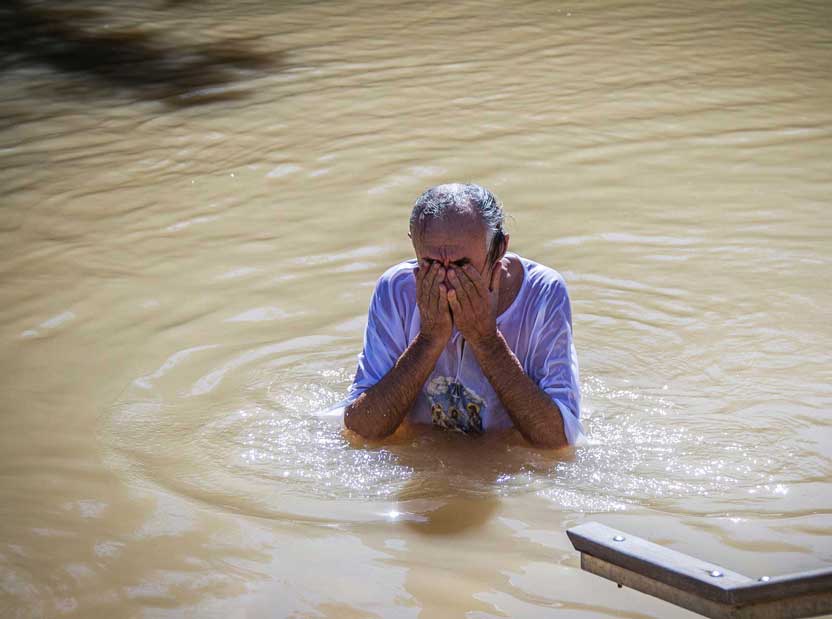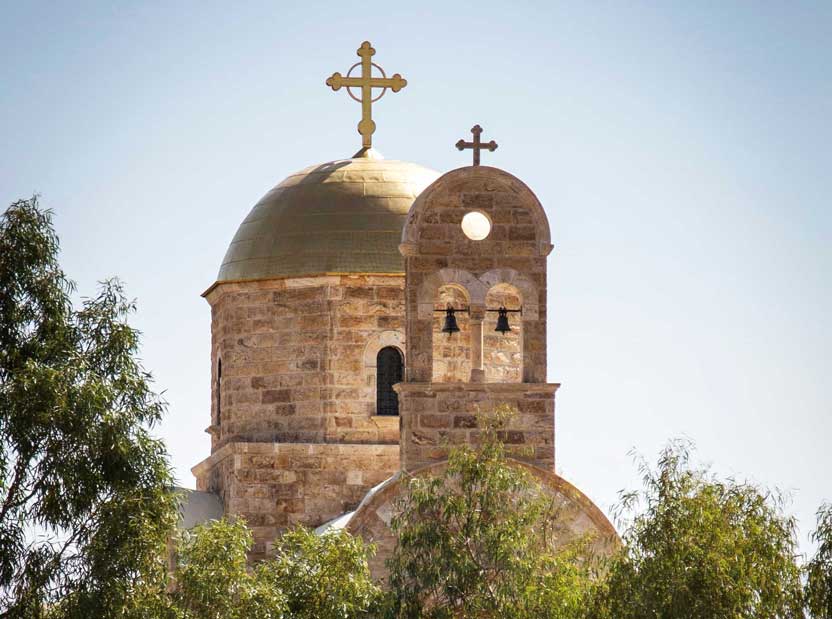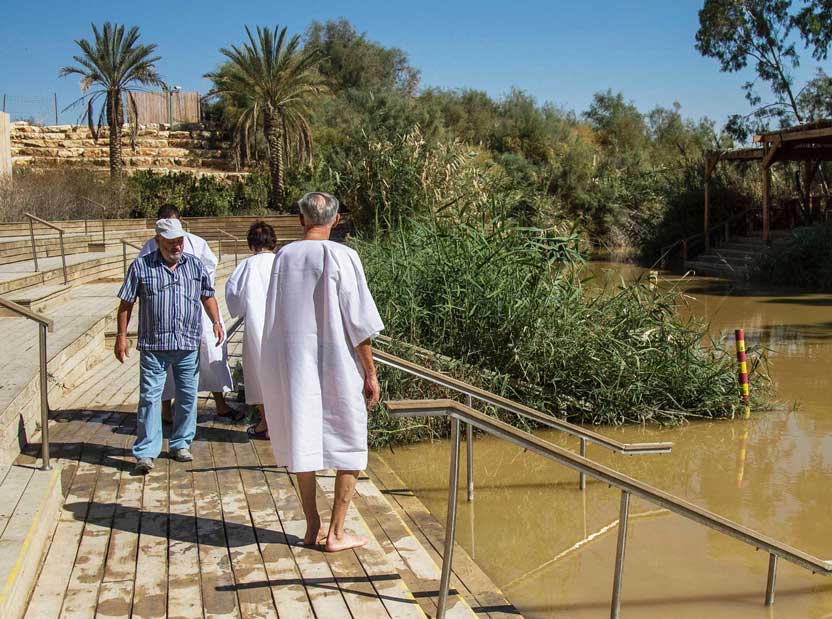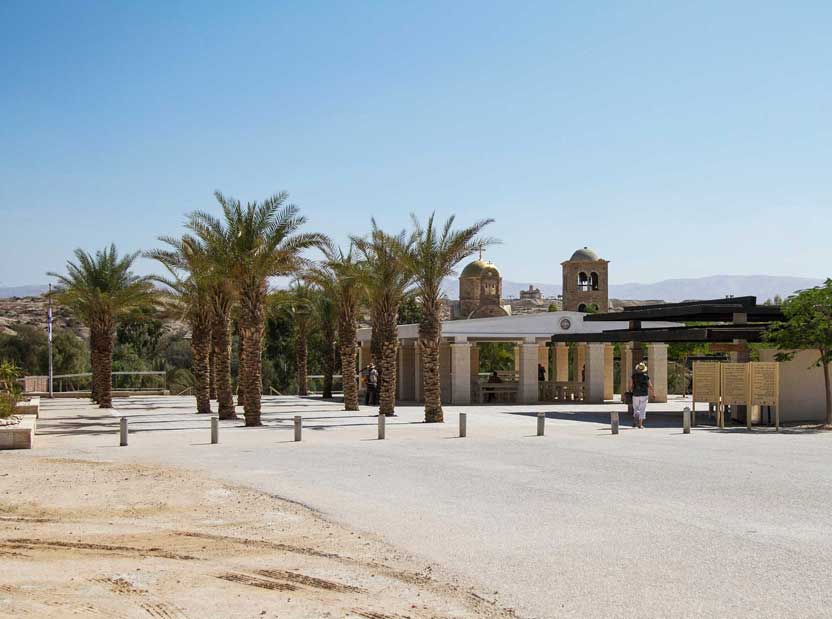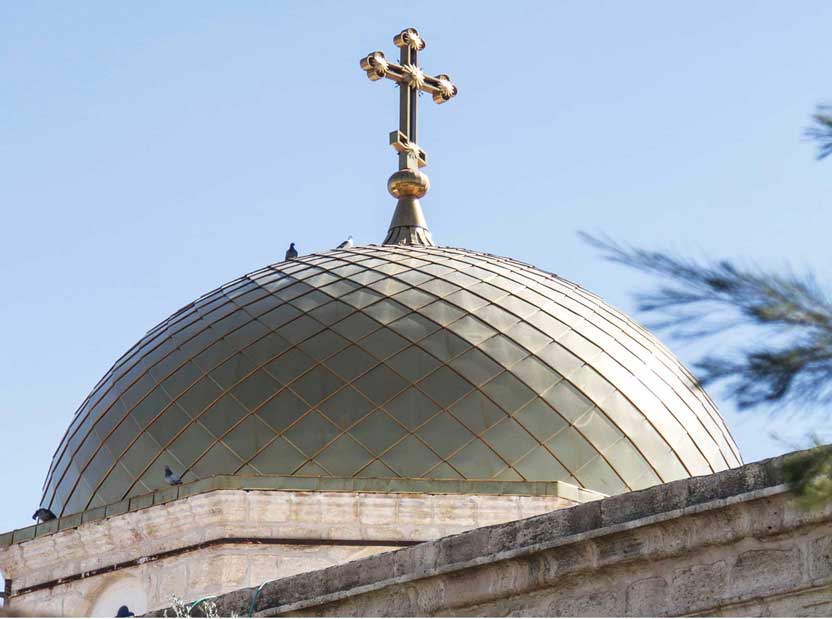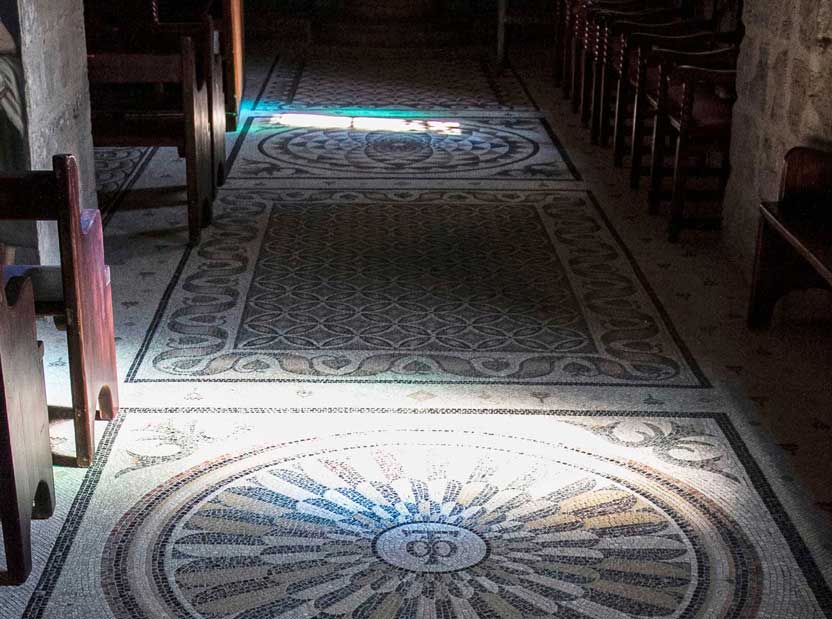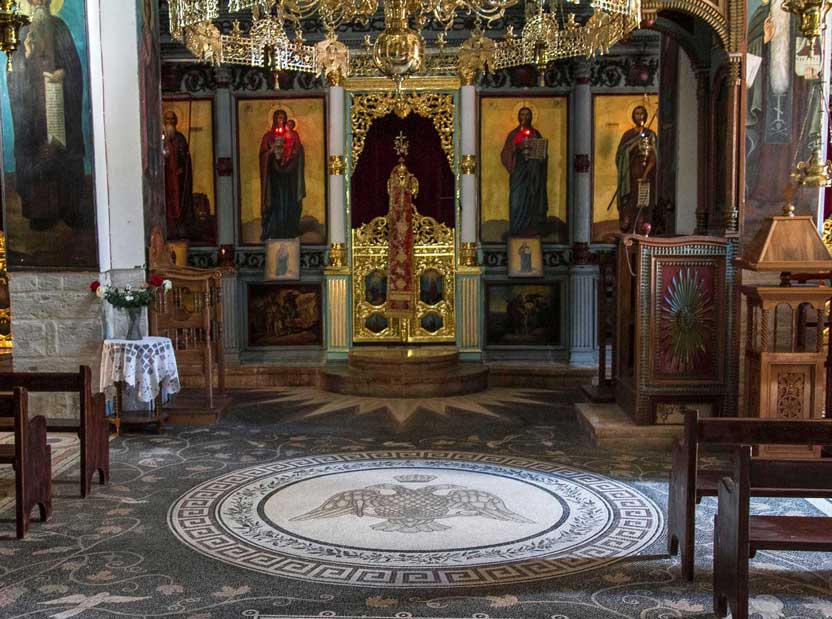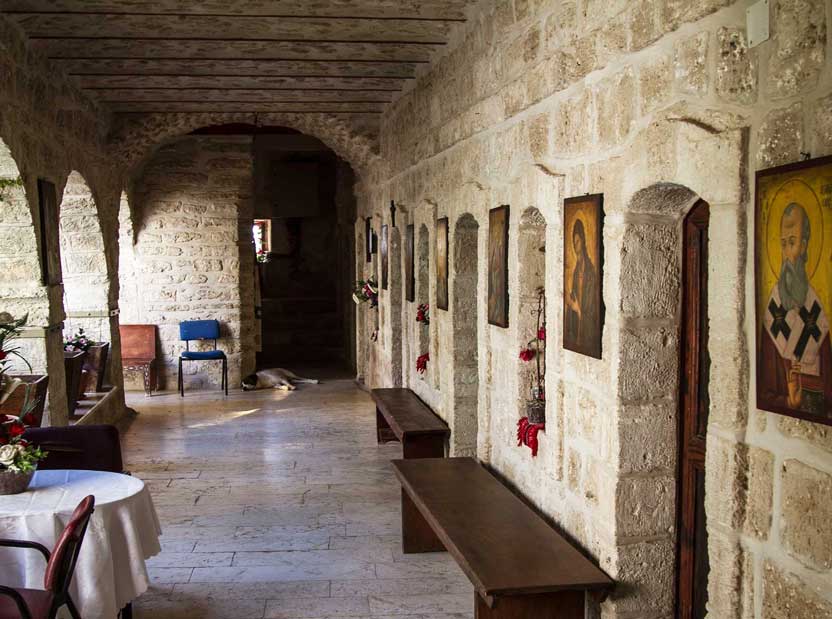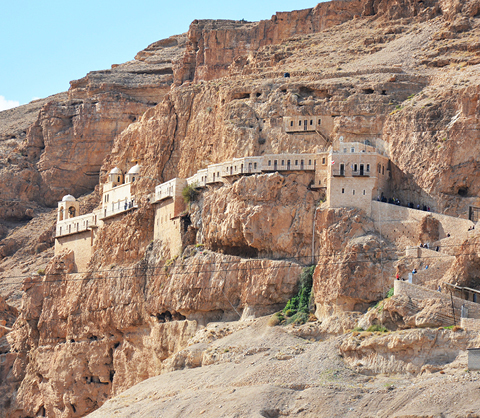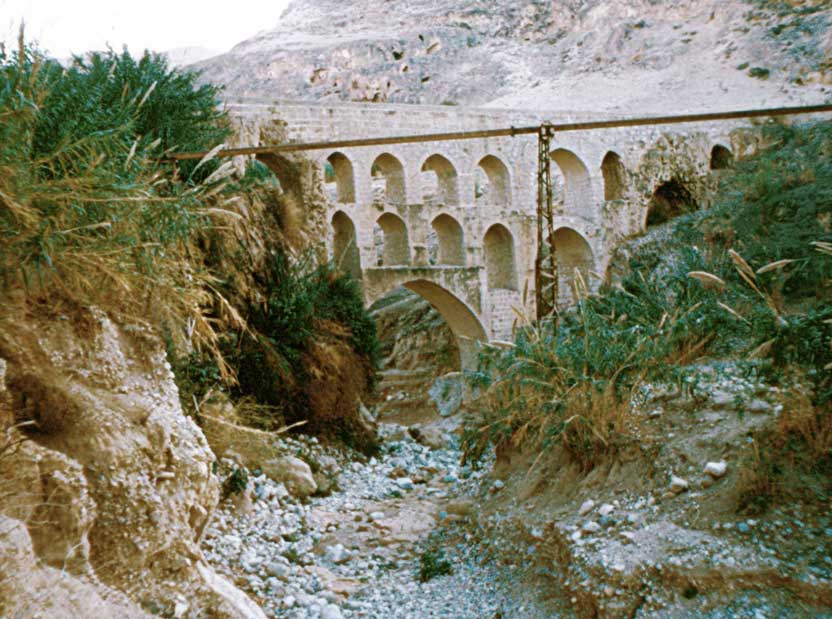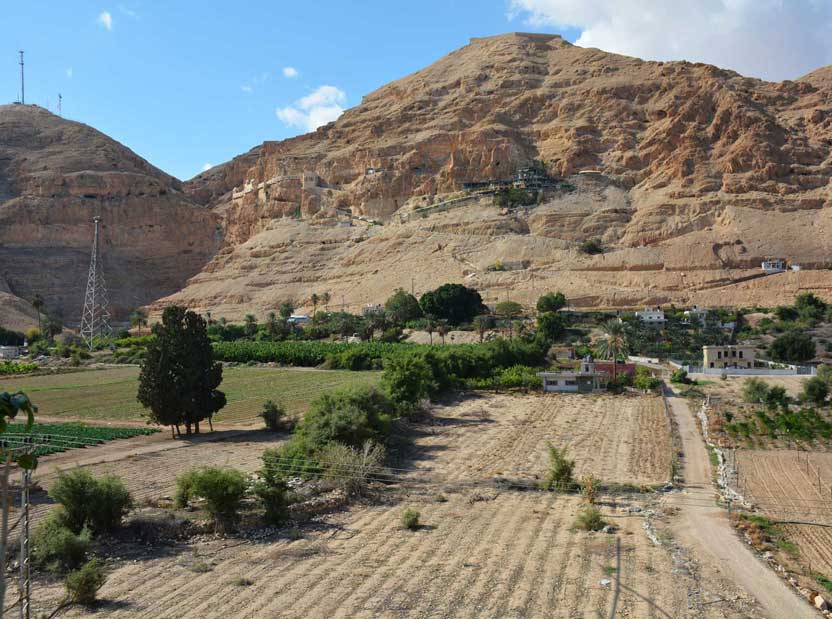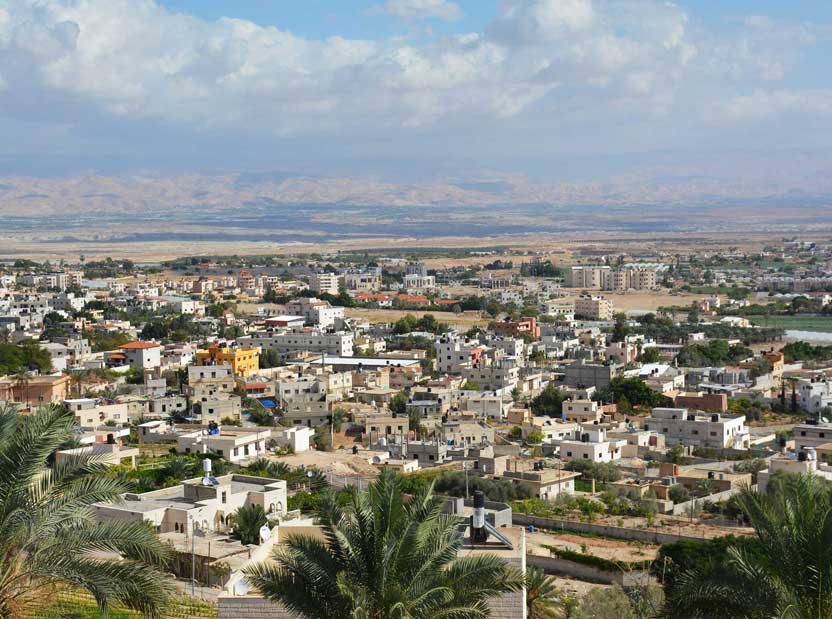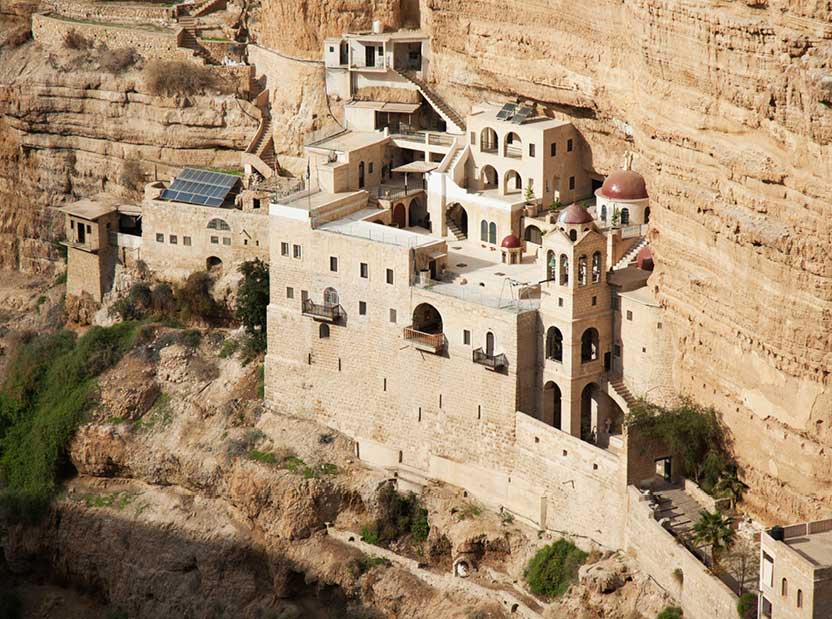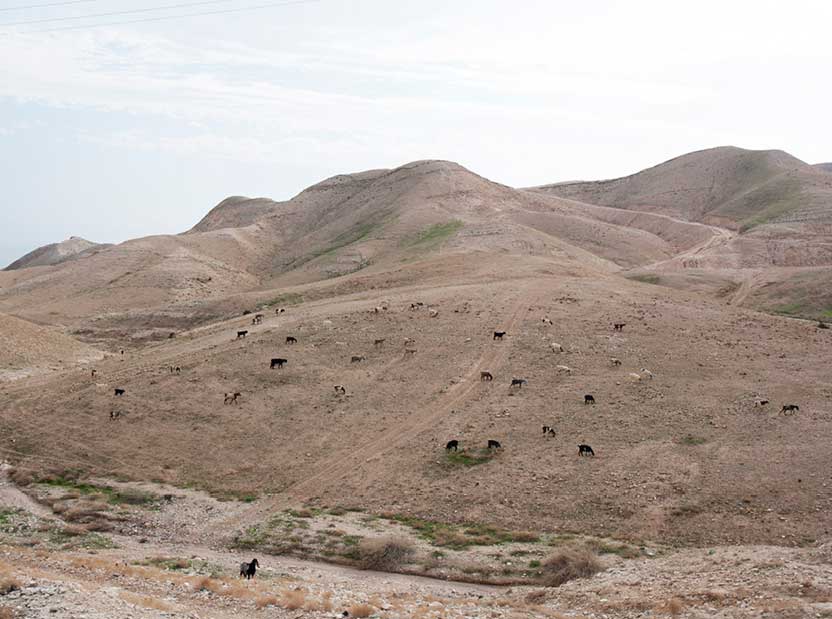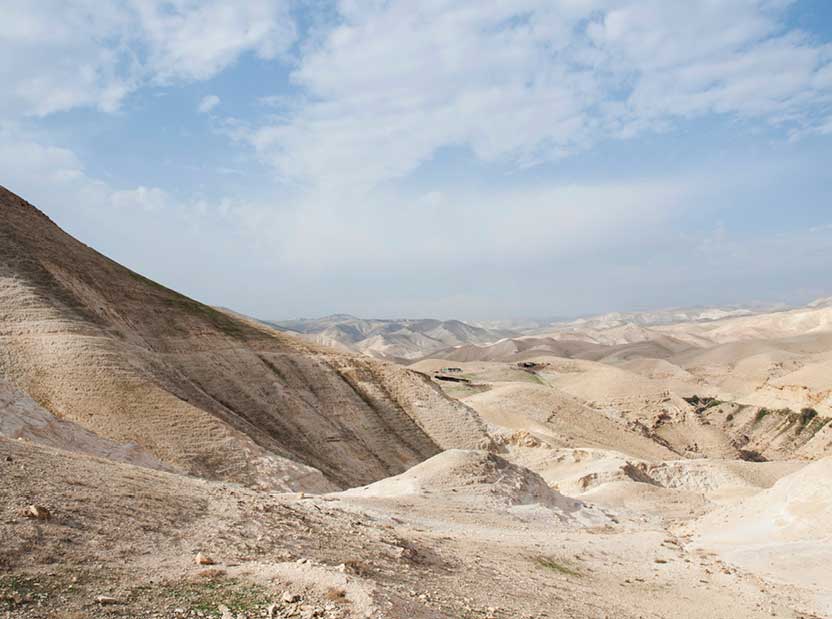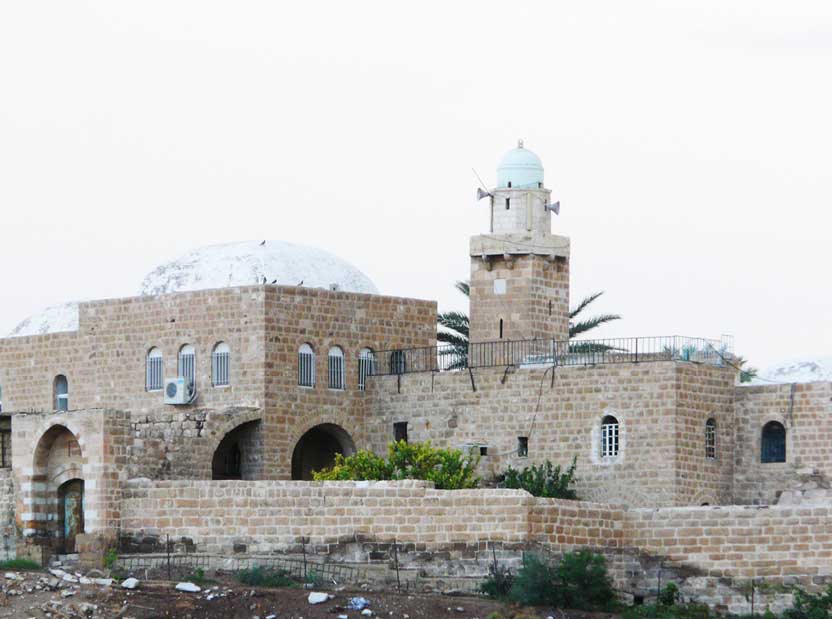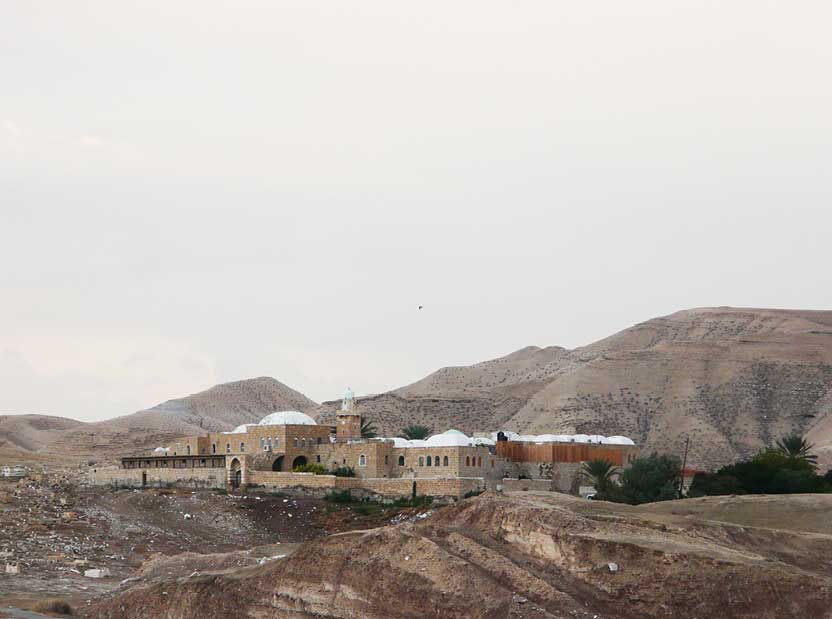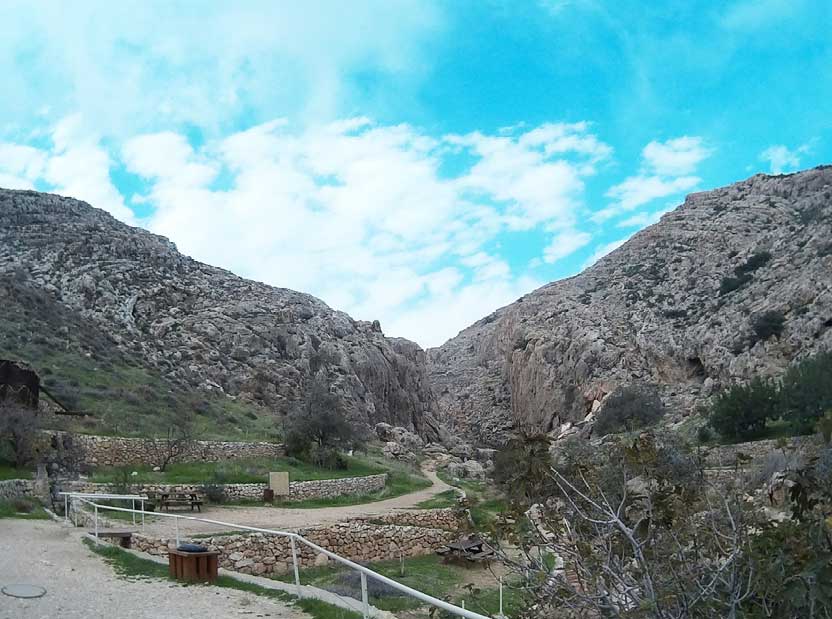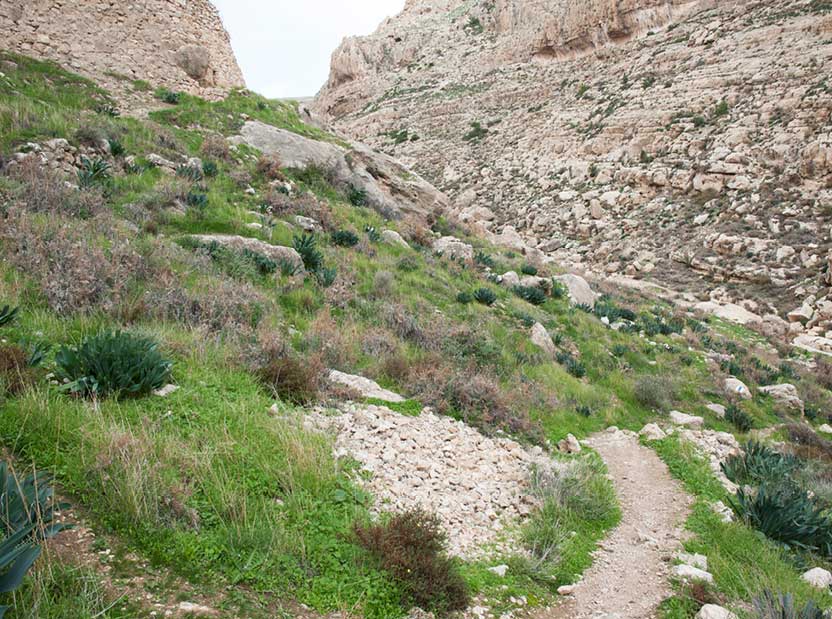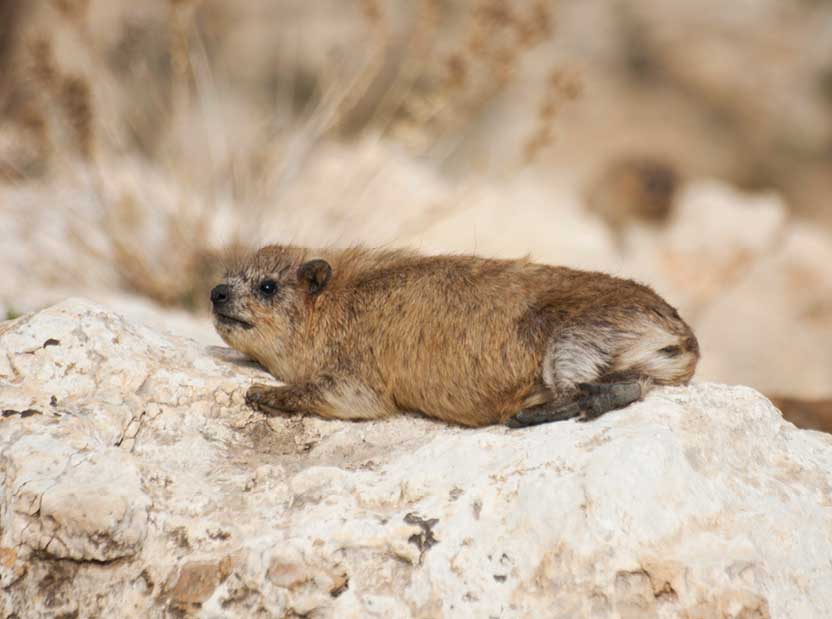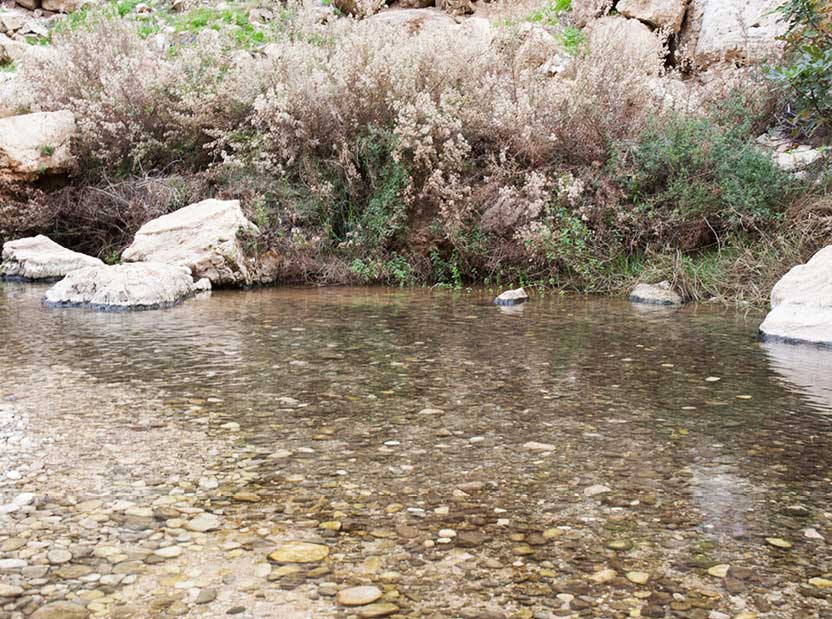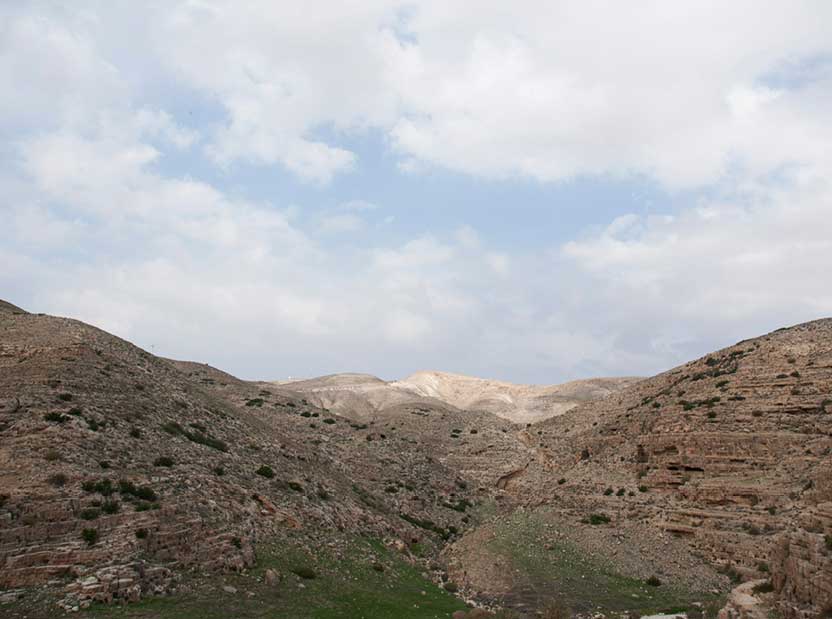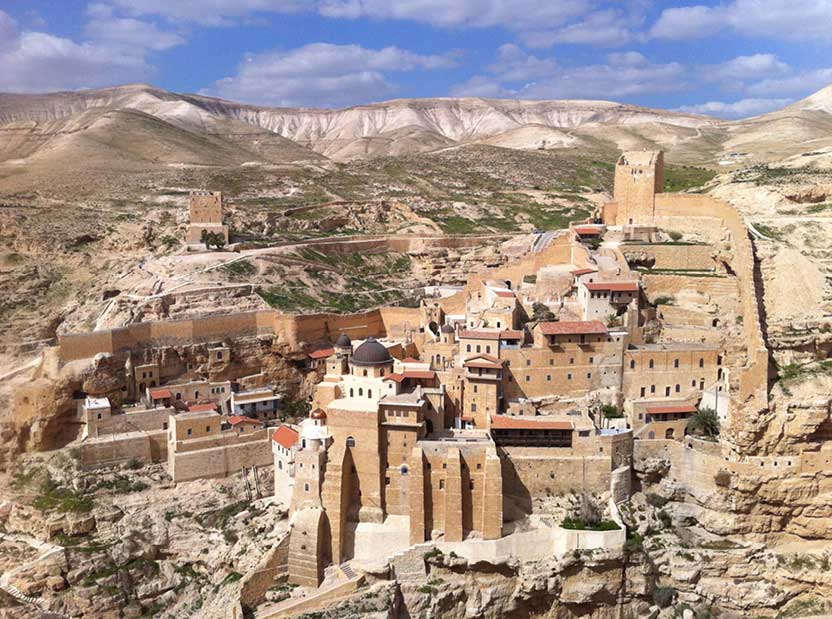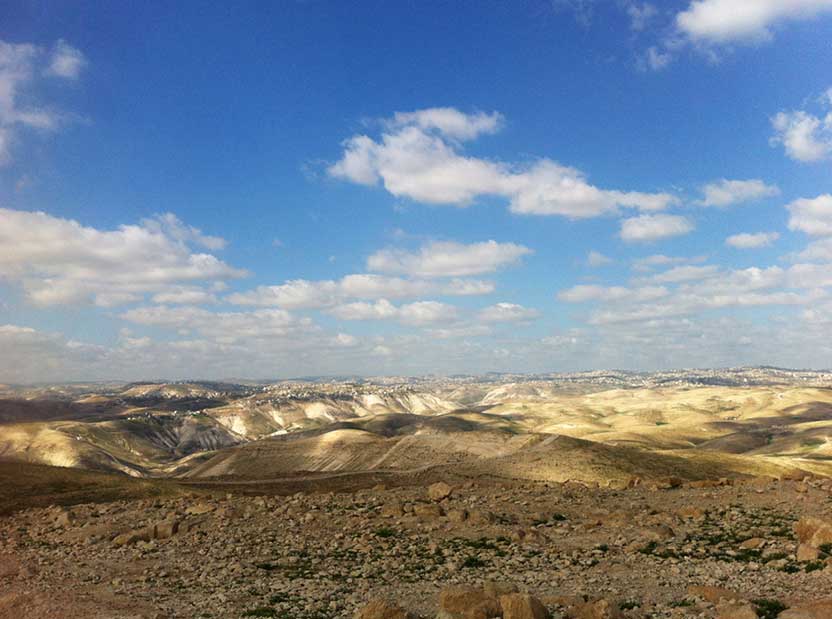The Qumran region’s rich tradition of spiritual retreat stretches from Saint John the Baptist, the first Christian saint to have taken refuge in the desert, to the thousands of monks and hermits to seek prayer in isolation, to the millions of pilgrims who arrive every year to pay tribute to those who came before them. The land of Qumran’s epic history of pilgrimage is represented by a wealth of stunning monasteries, churches, tombs and other places of reverence.

Pilgrimage
Sacred Pilgrimage Sites
QASER EL YAHUD BAPTISMAL SITE
Qaser el Yahud is a baptismal site on the western bank of the Jordan River, just north of the Dead Sea. Traditionally recognized as the place where Jesus of Nazareth was baptized by St. John the Baptist, it is also said to be where the Israelites crossed into the Promised Land, and where the prophet Elijah ascended to heaven on a chariot of fire.
Read more
Because Christian tradition marks Qaser el Yahud as the place of Jesus’ spiritual birth, the site is one of the most sacred in the world, just behind the Church of Nativity (in Bethlehem, where Jesus was physically born), and the Church of the Holy Sepulchre (at Golgotha, where he was crucified).
Pilgrims can enter the river via marble steps that descend into the Jordan River. Surrounding the area are ruins of Byzantine and Crusader churches that were built at the site throughout the centuries.
The site reopened to the public in 2010 after having been closed for 44 years. Although operated under the Israeli authorities, visitors today can reach Qaser el Yahud from Israel, Palestine or Jordan.
For visiting hours and other practical information, visit the Israel Nature and Parks Authority listing here.
DEIR HAJLA MONESTARY / ST. GERASIMUS MONASTERY
Deir Hajla is a Greek Orthodox monastery near the city of Jericho in the southern Jordan River Valley. Built above a cave believed to be the place where Mary, Joseph and the infant Jesus hid when they fled from King Herod, the monastery also commemorates Saint Gerasimus and is one of the many important Christian pilgrimage sites in the Qumran region.
Read More
St. Gerasimus of the Jordan was among the early monks who arrived in the Land of Israel sometime in the fifth century. According to Christian tradition, the saint once tamed a lion by removing a thorn from its paw. The lion rewarded St. Gerasimus with its obedience and lived with him through the rest of his days in the Judean Desert.
Gerasimus’ original monastery was built as a lavra – a cluster caves for hermits with a church at the center. This monastery was destroyed during the Sasanian invasion in 614 AD, and rebuilt in its current style in the 12th century during the Crusades.
Over the centuries the monastery was destroyed, abandoned or leveled by earthquakes several times, and each time it was built again. In 1890, the monastery was restored by Greek Orthodox monks, who preserved the Crusader era architecture.
The monastery features a square courtyard that is surrounded on four sides with arches and supporting pillars. A large water cistern sits in the middle of a central garden and plaza.
The central space of the church is separated from the holy area of the altar by the iconostasis, which is decorated with images of other monks from the era of Gerasiumus who lived and worked nearby, including Saint Euthymius, a pioneering monk who founded several monasteries in the region, and Saint Simeon Stylites, who is known to have sat on a column without stepping off of it for 37 years.
A crypt beneath the church houses the skeletal remains of monks who lived in the monastery as far back as the seventh century AD. Gerasimus’ skull can be seen near the entrance to the church.
The monastery is open to visitors throughout the week. Modest dress is required.
MONASTERY OF THE TEMPTATION
“Again, the devil taketh him up into an exceeding high mountain, and sheweth him all the kingdoms of the world, and the glory of them; And saith unto him, All these things will I give thee, if thou wilt fall down and worship me. Then saith Jesus unto him, Get thee hence, Satan: for it is written, Thou shalt worship the Lord thy God, and him only shalt thou serve.” (Matthew 4:8-10)
Read More
The Monastery of Temptation takes its name from the Mount of Temptation, where Jesus spent forty days and forty nights fasting and meditating during the temptation of Satan. It is one of the holy sites that was recognized by Queen Helena (Augusta Helena of Constantinople) during her pilgrimage in 326 AD. In the 6th century AD, Byzantine monks built a monastery using natural caves under the summit of the mountain.
.
In 1099, the Crusaders built two churches on the site – one in a cave believed to be the cave in which Jesus meditated, and one on the summit. The Crusaders called the mountain
“Mons Quarantana” (Quaranta meaning forty, the number of days Jesus fasted).
The modern monastery was built in 1895 on land purchased by the Orthodox Church.
Climbing the steep path up the mount is difficult but short – most adults can reach the church in under 30 minutes. In 1998 a cable car was built to connect the monastery to Tel Sultan in nearby Jericho. At the entrance to the monastery there is a restaurant, cafe and souvenir shop.
SAINT GEORGE MONASTERY
The dramatic Monastery of Saint George (also known as St. George of Koziba), built into the cliffs of Wadi Kelt, is inhabited by Greek Orthodox monks. The monastery began in the fifth century AD as a lavra – a community of hermit monks living in caves around the place traditionally known as where the prophet Elijah was fed by ravens. The monastery itself was built late in the fifth century AD by John of Thebes, and named for the most renowned monk living there at the time, Gorgias of Coziba.
Read More
Like most of the monasteries in the area, the St. George Monastery was destroyed by the invading Sasanian armies in 614 AD. The bones and skulls of the fourteen monks massacred by the Sasanians can still be seen in the chapel.
The Crusaders attempted to restore the monastery, but it fell into disuse after their expulsion from the Holy Land. In 1878 a Greek monk named Kalinikos arrived at the monastery and spent twenty-three years restoring it to its former stature.
The monastery is open to pilgrims and visitors, and can be reached by a pedestrian bridge that stretches across Wadi Kelt. A road from Mizpe-Jericho leads to the cliffs above the monastery and to a magnificent lookout.
NABI MUSA
Maqam al-Nabi Musa is the traditional Muslim pilgrimage site of the Tomb of the Prophet Moses. It has been the site of annual pilgrimage since the time of Saladin (the twelfth century AD). The tomb is just off the main road from Jerusalem to Jericho, along the Mediterranean Arabs’s route of the Haj – the pilgrimage to Mecca.
Read More
Nabi Musa, one day’s march from the direction of Jerusalem, is also an excellent vista point for Mount Nebo – where the Old Testament suggests that Moses was buried. According to Muslim tradition, Saladin received a revelation in a dream that the Moses’ true tomb was located across from Mount Nebo, at the present site of Nabi Musa. Saladin built a cenotaph and mosque to commemorate the location.
In 1269, Malmuk Sultan Baibars al-Bunduqdari built a small shrine on the site and began a tradition of a week-long festival of pilgrimage to the site. A hospice for pilgrims and minaret were built in the fifteenth and sixteenth centuries. The hospice has been expanded several time over the centuries to accommodate the growing numbers of pilgrims.
After several centuries of neglect, the buildings were restored by the Ottomans in 1820 and the weeklong pilgrimage from the Al-Aqsa mosque in Jerusalem was reinstituted.
The tomb (maqam) is a large one-story building with a courtyard in the middle, surrounded by rooms topped with a complex of domes. The mosque on the western side of the courtyard is separated into two areas – one for men and one for women. A small door inside the mosque leads to a hallowed room that contains the actual tomb.
The minaret (tower) outside the mosque provides incredible views of the shrine, Mount Nebo and the surrounding desert hills, and the Jordan Valley to the north. A double-domed structure 2 km down the road from Nabi Musa marks the tomb of Moses’ shepherd, Hasan Al-Rai, and the shrine is surrounded by a cemetery for Muslims, some of whom died during the festivals.
CHARITON MONASTERY
The Chariton Monastery is a beautiful Russian monastery located within the Ein Prat Nature Reserve, on the southern bank of the riverbed above Ein Prat. The original structure was founded by the hermit-monk Saint Chariton in the fourth century AD. Saint Chariton dedicated the monastery to Makarius, the Byzantine bishop of Jerusalem at the time, but the monastery came to be known by the name of its founder.
Read More
The heart of the monastery is St. Chariton’s tomb. According to the tradition, Chariton built the monastery at that very location because it was there he was imprisoned and miraculously saved from a group of highway robbers. Chariton was tied up and alone in the cave when a viper snake entered. Rather than bite the monk, it spit its venom into one of the bandits’ bottles of wine. When the bandits came back to the cave, they drank the wine and died, and Chariton was saved.
The monastery was destroyed during the Sasanian invasion of 614 AD, and reconstructed over a thousand years later by the Russian Orthodox church. The new structure is built on the remains of the Byzantine monastery, and many of the rooms and chapels are built around caves where the first monks lived.
The monastery has been a popular pilgrimage site for generations. It is surrounded by orchards, water cisterns and agricultural terraces, as well as the remains of a hostel and other structures that served the pilgrims who came to pay their respects.
Entrance to the monastery is permitted. Visitors should take care to dress modestly.
MAR SABA MONASTERY
One of the world’s oldest inhabited monasteries, Mar Saba (Saint Saba) was founded in 483 AD by monks who sought to emulate the prophets, Jesus and John the Baptist by seeking solitude in the Judean Desert. Sometimes referred to as the Convent or Monastery of Saint Sabba, the Greek Orthodox monastery holds the relics of its founder, St. Sabbas the Sanctified (Sabbas of Mutalaska, Cappadocia).
Read More
In the early seventh century AD, Mar Saba was home to St. John of Damascus, who is known for his key role in the Iconoclastic Controversy (Byzantine Emperor Leo III’s prohibition of the veneration of icons). St. John’s tomb lies in a cave underneath the monastery.
The monastery also played a very important role in the development of the Orthodox Church’s liturgy. Saint Sabas’ monastic Typicon as practiced in Mar Saba became the standard practice throughout the Eastern Orthodox Church and Easter Catholic Churches following the Byzantine rites.
The monastery, which still maintains its ancient traditions, is open to pilgrims and visitors. In keeping with ancient tradition, however, women are restricted from entering the main compound and can only visit the Women’s Tower near the main entrance.


